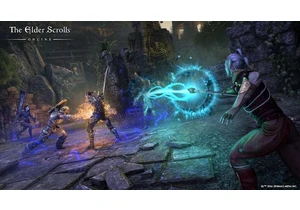The image of the Serpens Nebula you see above, taken by NASA’s James Webb Space Telescope (JWST), not only looks mesmerizing but also captures a never-before-seen phenomenon. The aligned, elongated “protostellar outflows” visible in the top left support a longstanding theory. As suspected, the jets shoot out in alignment from the swirling disks of surrounding material, showing evidence that clusters of forming stars spin in the same direction.
NASA says the bright and clumpy streaks in the image’s upper-left area, which somewhat resemble JJ Abrams-style lens flare, represent shockwaves caused by outward-shooting jets that emerge when the interstellar gas cloud collapses inwards. As forming stars condense and twirl more rapidly, some material shoots out perpendicular to the disk.
“Astronomers have long assumed that as clouds collapse to form stars, the stars will tend to spin in the same direction,” Klaus Pontoppidan of NASA Jet Propulsion Laboratory wrote in a blog post. “However, this has not been seen so directly before. These aligned, elongated structures are a historical record of the fundamental way that stars are born.”
The Serpens Nebula is only one or two million years old and sits around 1,300 light years from Earth. NASA says the dense cluster of protostars at the image’s center includes stars less than 100,000 years old. Serpens is a reflection nebula, meaning the gas and dust cloud shines by reflecting light from stars inside or nearby.
The JWST’s Near-Infrared Camera (NIRCam) captured the image, which covers about 16 trillion miles by 11 trillion miles. The black rectangles you see at the full image’s lower left and upper left represent missing data. NASA says its next step is to use the telescope’s Near-Infrared Spectrograph (NIRSpec) to study the Serpens Nebula’s chemical breakdown.
You can check out NASA’s instructional video below for a closer look at specific details from the glorious image.
This article originally appeared on Engadget at https://www.engadget.com/the-webb-telescopes-dazzling-nebula-image-supports-a-long-held-theory-210229206.html?src=rss https://www.engadget.com/the-webb-telescopes-dazzling-nebula-image-supports-a-long-held-theory-210229206.html?src=rssConnectez-vous pour ajouter un commentaire
Autres messages de ce groupe

Amazon Prime Day has returned for the summer, making it a good time to check to see if any big-ticket gadgets on yo

Xbox was well on its way to delivering a sci-fi stylized game with plenty of exciting movement mechanics before an abrupt change of heart. The upcoming third-person shooter RPG codenamed Blackbird

Big ticket items like TVs and iPads might get the lion’s share of the attention during Amazon’s big sale, but there are plenty of Prime Day deals to be had for under $50, too. We’ve combed through

If you've been itching to invest in a robot vacuum to help you clean up around the house, you're in luck. Prime Day deals, like clockwork, have brought discounts to a bunch of our favorite robot va

So you need a new laptop — you’ve waited for the right time. Amazon Prime Day 2025, as has been in years past, offe


